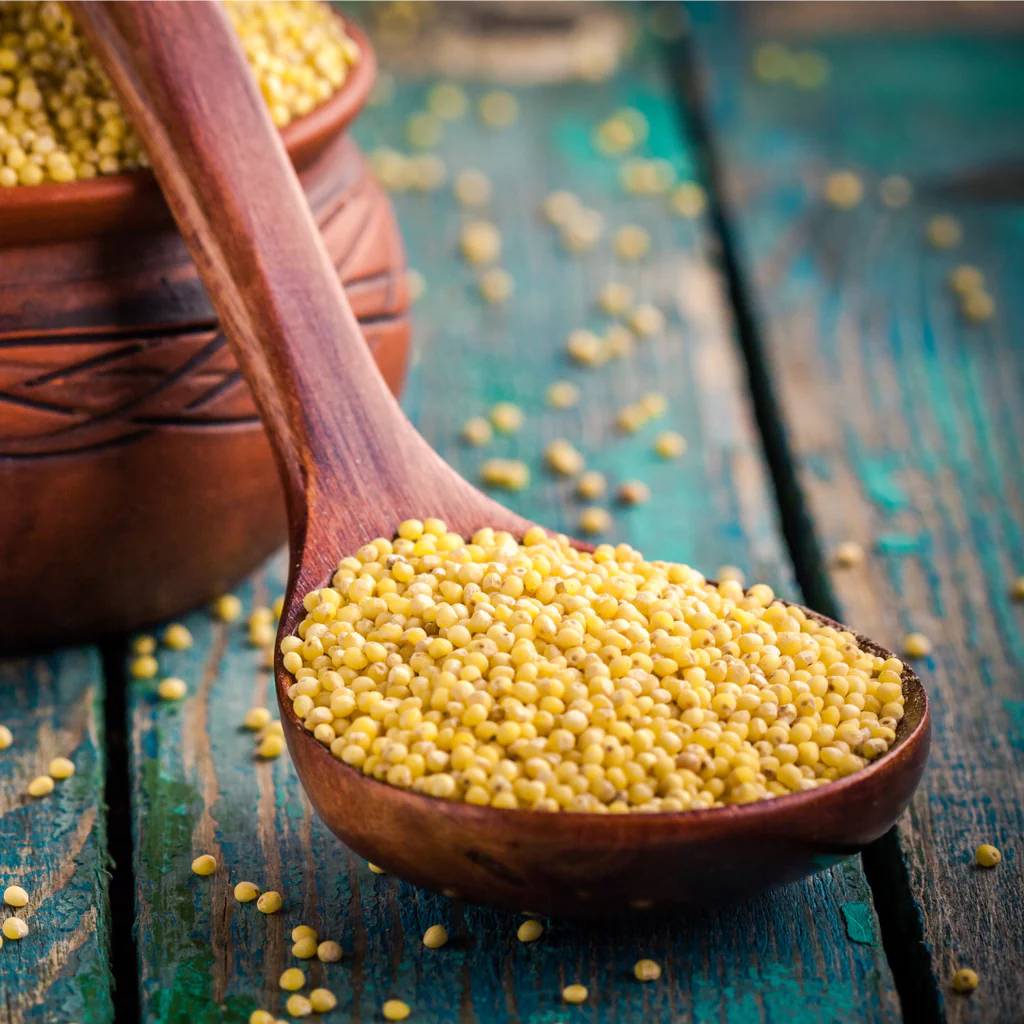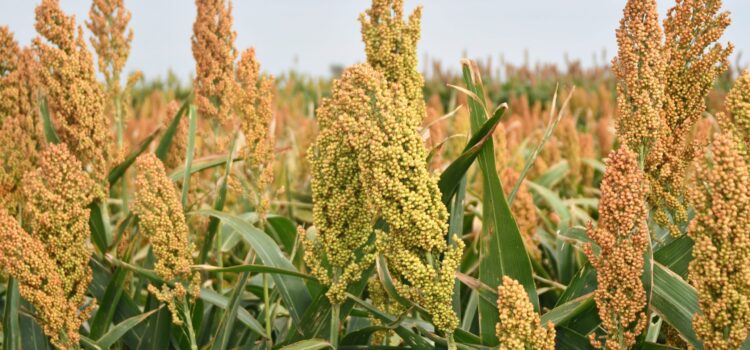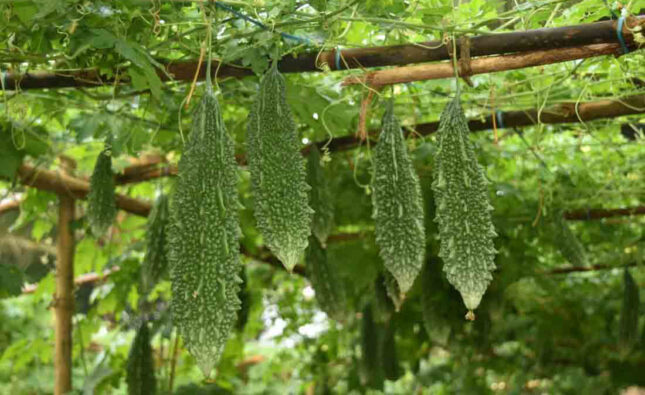Millets Cultivation, Verities & Its Importance
Millets Cultivation Is a group of small-seeded grasses that are cultivated as cereal crops for food and fodder. They are primarily grown in semi-arid regions of Africa and Asia, and they have been cultivated for thousands of years. Millets are highly nutritious and rich in protein, fiber, minerals, and vitamins. After the demand of Government of India, the United Nations declared 2023 as the ‘International Year of the Millet’.
There are several different types of millets, including:
1. Pearl millet (Pennisetum glaucum) Bajra:
It is the most widely cultivated millet and is commonly used in Africa and India. Pearl millet is known for its tolerance to drought and high temperatures.
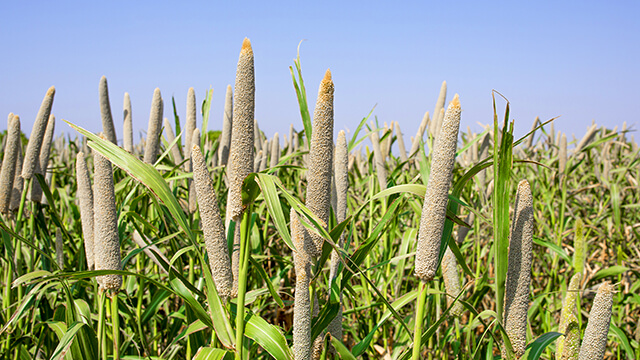
2. Finger millet (Eleusine coracana) Ragi/Madua:
It is a staple crop in parts of Africa and Asia, particularly in Eastern and Southern Africa. Finger millet is rich in calcium and other minerals.
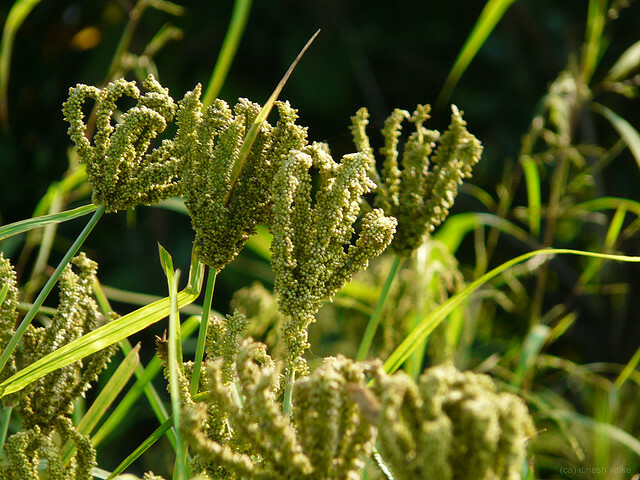
3. Foxtail millet (Setaria italica) Kangni/Kakum:
It is grown in China, India, and other parts of Asia. Foxtail millet is known for its high iron content and is often used in porridge, bread, and other food products.
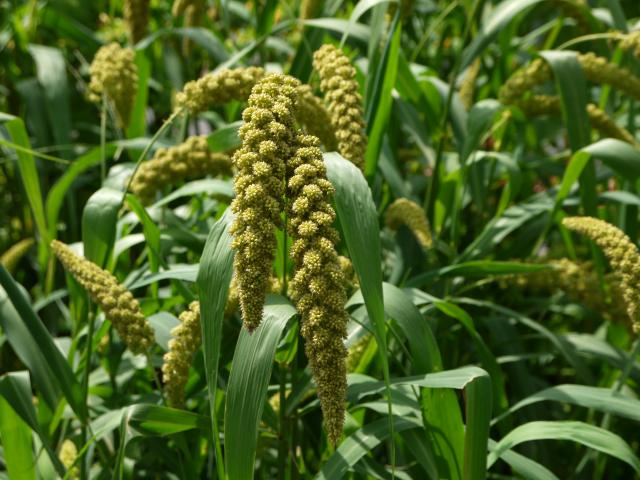
4. Proso millet (Panicum miliaceum) Barree:
It is grown in Europe, Asia, and North America. Proso millet is primarily used as birdseed but is also consumed by humans and used in various food products.

5. Barnyard millet (Echinochloa spp.) Jharua:
It is cultivated in India and other parts of Asia. Barnyard millet is gluten-free and is used in the preparation of porridge, idli, dosa, and other dishes. Millets are gaining popularity worldwide due to their nutritional value, gluten-free nature, and their ability to grow in harsh environments. They are used in a variety of dishes, including porridge, bread, couscous, pilaf, and as an ingredient in gluten-free flour blends.

6. Sorghum millet/Jowar:
Grows in warm, arid climates receiving around 45-100 cms of rainfall annually. Temperature requirements are around 20-35 degrees Celsius in Kharif season and around 15 degrees Celsius in Rabi season.

7. Kodo millet/Kodon:
Kodo millet is highly nutritious and offers a range of essential nutrients. It is a good source of dietary fiber, providing around 9-10 grams of fiber per 100 grams. Kodo millet also contains significant amounts of protein, ranging from approximately 7-12 grams per 100 grams. It is rich in minerals such as iron, calcium, phosphorus, and magnesium. Kodo millet is also low in fat and gluten-free.

Millets Farming
Millets are primarily grown as dryland crops in regions with arid or semi-arid climates. The cultivation of millets follows a specific farming process, which can vary slightly depending on the type of millet being grown and the specific region. Here are some general steps involved in millet farming:
1. Soil preparation:
Millets are typically grown in well-drained soils with good organic matter content. The land is plowed or tilled to loosen the soil and remove any weeds or crop residues. Soil testing may be conducted to assess its nutrient content and pH level, allowing farmers to make appropriate amendments if necessary.
2. Seed selection and sowing:
High-quality millet seeds are selected for sowing. Millets can be sown directly into the prepared soil or started in seedbeds and then transplanted. The sowing method depends on the specific millet variety and regional farming practices. The ideal sowing time may vary depending on the climate and specific millet variety.
3. Water management:
Millets are generally hardy and can tolerate dry conditions. They require less water compared to other cereal crops like rice. However, during the initial stages of growth, sufficient moisture is essential for germination and establishment. Depending on the rainfall pattern and soil moisture, farmers may supplement irrigation to ensure optimal growth.
4. Weed control:
Regular weeding is necessary to control weed competition, which can hamper millet growth. Manual weeding or the use of herbicides may be employed to keep the fields weed-free. Mulching can also be beneficial in conserving soil moisture and suppressing weed growth.
5. Pest and disease management:
Millets are relatively resistant to pests and diseases compared to other grains. However, they can still be affected by certain insects, birds, and fungal diseases. Integrated pest management techniques, such as crop rotation, use of resistant varieties, biological controls, and judicious application of pesticides, are employed to manage pests and diseases.
6. Harvesting:
Millets are harvested when the grains have matured and attained the desired moisture content. The exact harvesting time varies depending on the millet variety. The crop is typically cut close to the ground using sickles or mechanical harvesters. The harvested millet stalks are threshed to separate the grains from the straw.
7. Drying and storage:
The harvested millet grains need to be dried thoroughly to reduce moisture content and prevent spoilage. This can be achieved by spreading them in thin layers in a well-ventilated area. Once dried, the grains are cleaned to remove any impurities and stored in appropriate containers that protect them from moisture, pests, and rodents.
Health Benefits of Millets
Millets are a group of small-seeded grains that have been cultivated for thousands of years and are gaining popularity as a nutritious and healthy food choice. They offer several health benefits due to their unique nutritional profile. Here are some of the health benefits of millets:
1. Nutrient-rich:
Millets are rich in essential nutrients such as vitamins (B-complex vitamins, vitamin E), minerals (iron, calcium, magnesium, phosphorus), and antioxidants. They provide a good balance of macronutrients, including carbohydrates, proteins, and dietary fiber.
2. Gluten-free:
Millets are naturally gluten-free, making them an excellent choice for individuals with gluten sensitivity or celiac disease. They can be used as a substitute for gluten-containing grains like wheat, barley, and rye.
3. High in fiber:
Millets are a great source of dietary fiber, both soluble and insoluble. This fiber content aids digestion, promotes regular bowel movements, and helps maintain a healthy digestive system. It can also contribute to a feeling of fullness and aid in weight management.
4. Blood sugar control:
Millets have a low glycemic index, which means they cause a slower and steadier rise in blood sugar levels compared to refined grains. This property makes millets suitable for individuals with diabetes or those aiming to control their blood sugar levels.
5. Heart health:
Millets are beneficial for cardiovascular health due to their high content of antioxidants, fiber, and various nutrients. Regular consumption of millets has been associated with a reduced risk of heart disease, including lower levels of cholesterol and triglycerides.
6. Weight management:
Millets have a low calorie density and are filling due to their fiber content. Including millets in your diet can help you feel satiated for longer periods, reducing the tendency to overeat and aiding weight management.
7. Reduced risk of chronic diseases:
The antioxidant compounds present in millets, such as phenolic acids and flavonoids, have been linked to a reduced risk of chronic diseases, including certain types of cancer, heart disease, and neurodegenerative disorders.
8. Improved digestion:
The high fiber content in millets supports a healthy digestive system by promoting regular bowel movements, preventing constipation, and improving overall gut health.
9. Increased energy levels:
Millets are a good source of complex carbohydrates, providing sustained energy release and preventing blood sugar spikes. They can be particularly beneficial for athletes and individuals with active lifestyles.
10. Bone health:
Millets contain minerals like calcium, phosphorus, and magnesium, which are essential for maintaining healthy bones and teeth. Regular consumption of millets can contribute to better bone health and reduce the risk of conditions like osteoporosis.
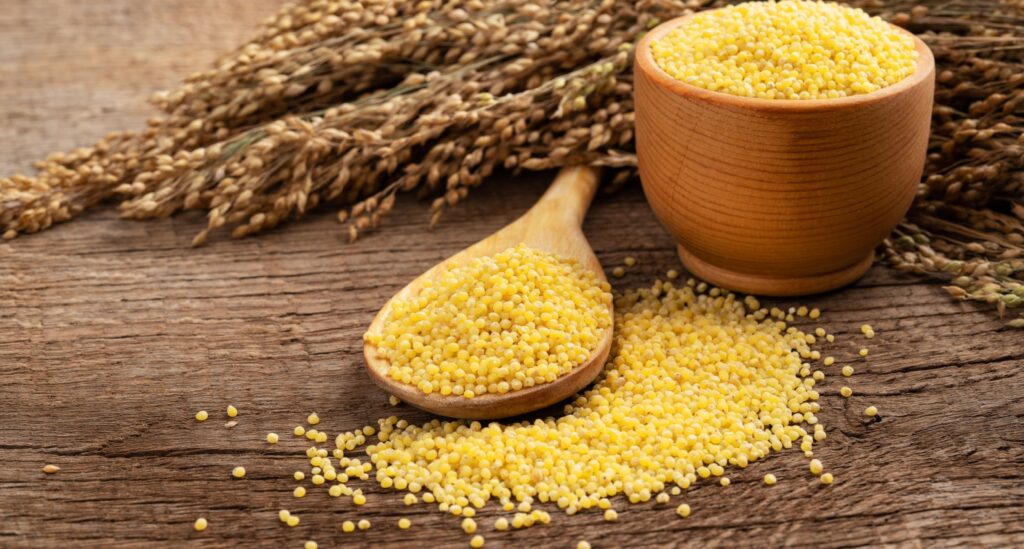
Demand of Millets
In recent years, there has been a growing demand for millets due to their numerous health benefits and versatility in culinary applications. The demand for millets can be attributed to several factors:
1. Increasing health consciousness:
As people become more health-conscious and seek out nutritious food options, millets have gained popularity. Millets are perceived as natural, whole grains that offer a range of health benefits, making them an attractive choice for health-conscious individuals.
2. Gluten-free and allergen-friendly diets:
The rise in gluten sensitivity and the increased awareness of celiac disease have led to a surge in demand for gluten-free alternatives. Millets, being naturally gluten-free, are an excellent choice for individuals following gluten-free diets or those with gluten-related disorders.
3. Sustainable and environmentally friendly farming:
Millets are hardy crops that require minimal water and fewer inputs compared to other grains like rice or wheat. They are resilient to harsh weather conditions and can be grown in arid and semi-arid regions. This makes millets an environmentally sustainable choice and aligns with the growing interest in sustainable farming practices.
4. Cultural and regional preferences:
Millets have been staple foods in many regions of the world for centuries. In certain regions, there is a cultural and traditional preference for millets in the local cuisine. The revival of traditional diets and indigenous food systems has contributed to the demand for millets.
5. Culinary versatility:
Millets are versatile grains that can be used in a variety of dishes. They can be cooked as a whole grain, used in porridges, ground into flour for baking, or even used in fermented products. The culinary versatility of millets has led to their inclusion in a wide range of recipes, attracting a broader consumer base.
6. Government initiatives and promotion:
Many governments and agricultural organizations have recognized the nutritional and environmental benefits of millets. They have launched initiatives to promote the cultivation and consumption of millets, creating awareness and driving demand.
Nutrient Composition of the Millets
The nutrient composition of millets can vary slightly depending on the specific type of millet. However, here is a general overview of the nutrient composition of millets based on their approximate percentages:
1. Carbohydrates:
Millets are primarily composed of carbohydrates, which provide energy. The carbohydrate content in millets ranges from approximately 60% to 75%.
2. Protein:
Millets are a good source of plant-based protein. The protein content in millets ranges from approximately 7% to 15%. Some millets, such as finger millet (ragi) and pearl millet (bajra), have higher protein content compared to others.
3. Dietary Fiber:
Millets are rich in dietary fiber, which aids in digestion and promotes a healthy digestive system. The fiber content in millets ranges from approximately 2% to 12%.
4. Fat:
Millets contain a small amount of fat, mainly in the form of healthy unsaturated fats. The fat content in millets ranges from approximately 2% to 8%.
5. Vitamins:
Millets are a good source of various vitamins, especially B-complex vitamins such as thiamin (B1), riboflavin (B2), niacin (B3), and vitamin B6. Millets also contain vitamin E. The exact vitamin content varies depending on the millet variety.
6. Minerals:
Millets are rich in minerals like iron, calcium, magnesium, phosphorus, and potassium. The mineral content can vary among different millet types, with some millets, such as finger millet, being particularly high in certain minerals.
